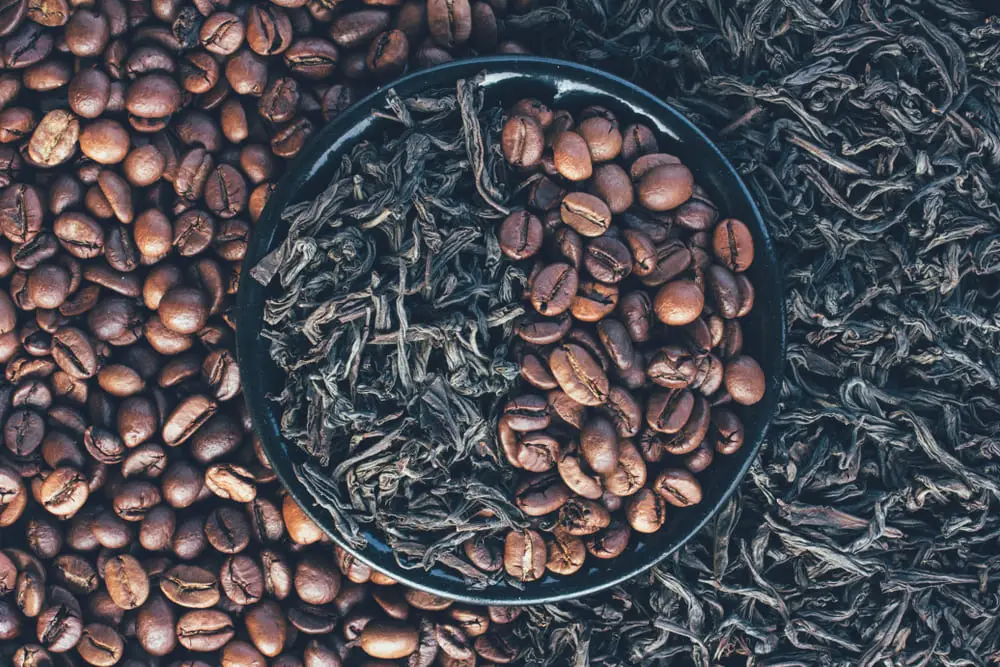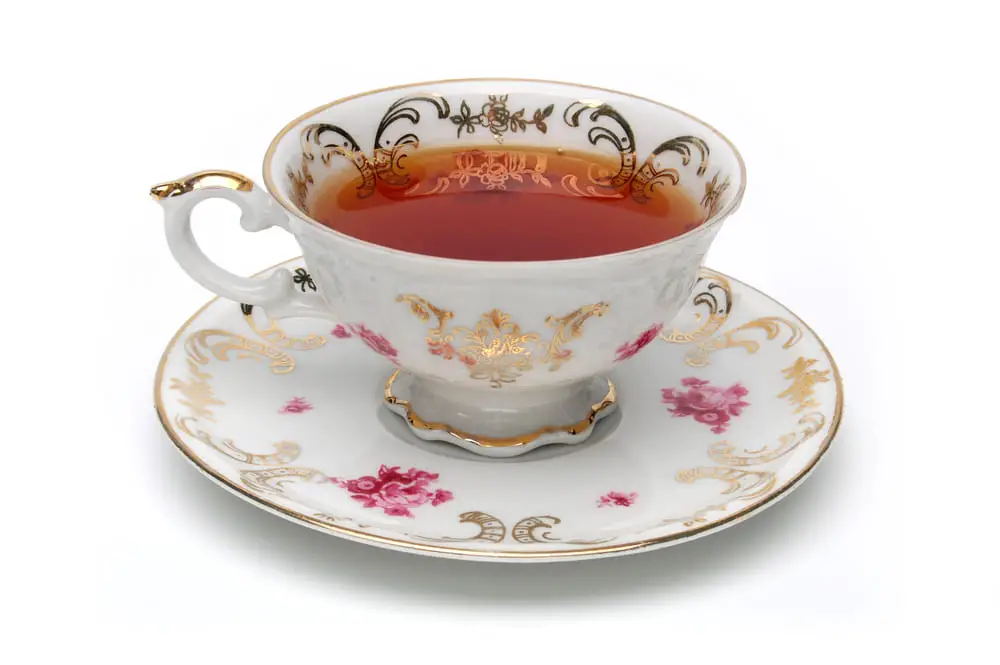Tea and coffee have gained ground when it comes to drinks that are most favored by people all around the world. However, tea and coffee enthusiasts have distinct features in terms of consumption styles and cup types.
Tea is usually known to be associated with relaxation and pondering many aspects of life. Some individuals even meditate while drinking tea, and they follow elaborate rituals that go along with it. Drinking coffee, on the other hand, is relatively easy because its primary goal is to aid in the maintenance of alertness and energy in the morning. So, how can you tell the difference between tea and coffee? Is there any disparity between a tea cup vs a coffee cup? Let us dive right into the matters via this post.
The History Of Tea And Coffee
Experts believe that tea originated in Asia, namely in southwestern and northern China, in terms of both history and biology. No one knows when people first started drinking tea, although it is said to have been popular during the Shang Dynasty (1600 BC – 1046 BC). According to legend, Shen Nung Emperor (2737-2697 BC) was the first one who discovered tea.

On the other hand, coffee was found in the Ethiopian highlands in the 9th century when it was utilized for the first time. From there, it went to Egypt and Yemen, then to Armenia, Persia, Turkey, and northern Africa by the 16th century. Coffee was brought to Italy from the Muslim world, then to the rest of Europe, Indonesia, and America. Coffee is becoming one of the most widely consumed beverages on the planet.
Interesting Facts About Tea Cups
Materials And Their Intended Use
Tea is typically consumed when still hot, while some might drink iced teas occasionally. Many people do not realize it is vital to drink tea in a certain type of cup, but tea cups are particularly produced in terms of style and size to optimize the taste, maintain the tea cup’s heat, and prepare the tea properly as its rituals. In addition, the materials used to construct the tea cups are carefully selected.

Teacups are frequently exhibited and sold in sets of cups and plates that come with the same teapot on the market. A few extra tiny bowls and plates for spilling cold tea residue and tea filters may be included in certain high-end tea sets.
Teacups come in a variety of materials, but the most common are porcelain and glass. Other high-end materials, such as bone porcelain with bone ash, make the tea cup more durable and provide a refined transparent finish.
Manufacturers frequently concentrate on the design and ornamentation of tea sets to develop unique designs that appeal to a variety of clients. If the print is uncommon and no longer made, certain tea sets become quite valuable.
Tea Cup Handle’s Design
There may or may not be a handle on the teacup. They are, however, designed to be held gently between your thumb and one or two fingers for the hold. When using these cups, keep one finger on the handle and pull away from the cup’s slope; this keeps your fingers away from the cup and prevents hand heating from boiling water.
Traditional Asian tea cups are normally produced without their handles and they are called tea bowls. Most European designs, however, will have handles.
Tea Cup’s Size And Shape
Teacups come in a variety of sizes, depending on where they’re created. Each cup of tea is made to swiftly cool from a boiling temperature to a drinking temperature. As a result, their mouths are broad and open, and they are fairly shallow.
A cup of tea may be stated as a unit of measure in some recipes, similar to a teaspoon or, more simply, a mug. This is extremely popular in Indian cookbooks and recipes. If you stumble upon this measurement, it’s equivalent to 190mL, which is around 4/5 cup in Standard Volume of America.
Things To Know About A Coffee Cup
Materials And Their Intended Use
Isn’t it amusing that I claimed the coffee cup is for drinking coffee? It is, nonetheless, true. Even though there are many different varieties of coffee cups, their design is very straightforward when compared to tea cups.

Coffee and tea mugs are commonly constructed of ceramic. A design that is comparable to that of a cup of tea may be seen in many coffee cup collections. As many people consider coffee to be a part of their daily routine, coffee mugs are becoming increasingly prevalent in terms of appearance and usage.
Furthermore, an increasing number of individuals drink coffee while commuting to work or traveling, necessitating the development of stainless-steel coffee mugs that retain heat and are convenient to transport.
Size And Shape Of A Coffee Cup
Coffee, unlike tea, is rarely made with boiling water, at least not directly, because the beans might be burned. It isn’t necessary to cool it down rapidly, too. Many individuals want their coffee to be as hot as possible. As a result, the form of a regular cup of coffee differs significantly from that of a cup of tea. A basic cup of coffee will be tall and narrow, allowing for less heat to escape via the surface area.
That being said, coffee cups come in a variety of forms and sizes, depending on their intended function. Latte, cappuccino, mocha, and Americanos are typically made using a big circular cup that can hold a lot of milk, froth, or boiling water. To showcase the art of latte, latte and mocha can also be served in tall, short, and flat cups. A classic cappuccino is often smaller and rounder, allowing it to sit easily in the palm of your hand.
Espresso, on the other hand, is only 1 ounce of pure, undiluted coffee and is served in a significantly smaller cup than conventional macchiatos of the same size.
The standard size of a cup of coffee purchased for ordinary home use in the United States is 237mL or 8 ounces of liquid, which is also the American unit of measure for 1 cup.
However, since Americans love their coffee very much, standard coffee cups for home usage are increasingly containing 12 or even 16 ounces. It’s also worth noting that these measures will alter if you’re traveling outside of North America. If you’re traveling in Europe or Asia, you might notice that coffee cup sizes are different.
If you go to a coffee shop or buy coffee to go, the normal cup sizes are 8 ounces for a small, 12 ounces for a regular, 16 ounces for a large, and 20–24 ounces for a large, if you want something bigger. Of course, these sizes may have their own names based on the café, such as Grande instead of Large.
Coffee Cup’s Handle
Coffee cup handles differ from teacup handles in that they carry substantially more liquid, necessitating more solid and robust grips.
A coffee cup’s handle is generally big enough to grasp two to four fingers. It’s fairly unusual to be able to hold your handle securely with a whole fist, depending on the cup and the size of your hand.
Is It Okay To Use A Coffee Cup For Tea?
When you claim you can’t, you’re probably wrong. After all, cups are just for beverages, so you may drink tea with coffee mugs. However, as previously discussed, the differences in the handle design and form of these two cups might make drinking tea or coffee difficult if you choose the improper cup.
Final Thought
Brewing and drinking coffee or tea isn’t the only part of the process. Many people nowadays are concerned with the art of drinking coffee and tea, as well as accessories such as cups, which must be both attractive and functional. Have you gotten yourself a go-to cup for coffee yet? I hope you’re enjoying a nice cup of coffee.
